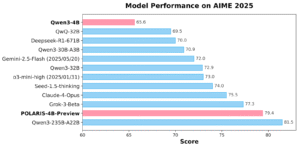Proposed Changes to Student Loan Repayment Plans: What Borrowers Need to Know
Introduction: The Future of Student Loan Repayment is Shifting
The proposed changes to student loan repayment plans by the Trump administration are making waves among borrowers and policy experts. These revisions aim to simplify income-driven repayment options and overhaul the Public Service Loan Forgiveness (PSLF) program. While the government suggests these adjustments will reduce regulatory complexity and benefit the budget, many borrowers are worried about losing essential protections. In this article, we’ll break down what’s being proposed, who it affects, and what you can do to stay ahead. Stay informed with updates from the Federal Student Aid Office.
Why the Proposed Changes to Student Loan Repayment Plans Matter
 These revisions could have long-term impacts on borrowers, especially those relying on income-driven repayment (IDR) and public service forgiveness. Here’s why this matters:
These revisions could have long-term impacts on borrowers, especially those relying on income-driven repayment (IDR) and public service forgiveness. Here’s why this matters:
- Major Impact on Borrowers
Borrowers in low-income brackets could lose flexible repayment terms.
- Uncertainty for PSLF Participants
Changes may impact eligibility, timing, and forgiveness criteria.
- Budgetary Realignment
The government aims to reduce the cost of federal student loan programs.
Learn how income-driven repayment works from the Consumer Financial Protection Bureau.
Top 10 Key Changes Proposed for Student Loan Repayment
- Simplified Income-Driven Repayment Plans
Multiple IDR plans could be combined into a single streamlined program.
- Elimination of Interest Subsidies
Interest subsidies for low-income borrowers may be reduced or eliminated.
- Adjusted Repayment Cap
Borrowers may have to pay a higher percentage of their income under new guidelines.
- Revisions to PSLF Eligibility
New criteria may make fewer borrowers eligible for Public Service Loan Forgiveness.
- Shortened or Extended Forgiveness Timelines
Timelines for loan forgiveness under IDR could be adjusted based on income or loan type.
- Revised Definition of Public Service
Some roles previously eligible for PSLF may be excluded under the new proposal.
- Reduced Forgiveness Amounts
Forgiveness may be capped based on degree level or career path.
- Elimination of Forgiveness for Graduate Loans
Graduate-level loans might no longer qualify for forgiveness under some proposals.
- Borrower Verification Enhancements
Tighter income verification could increase administrative burden on borrowers.
- Greater Emphasis on Private Sector Solutions
Borrowers may be encouraged to explore refinancing through private lenders.
Explore borrower protections with the Student Borrower Protection Center.
Current vs. Proposed Student Loan Repayment Features
| Feature | Current Plan | Proposed Changes |
| Number of IDR Plans | 4+ IDR plans | Single consolidated IDR plan |
| Payment Cap | 10-15% of discretionary income | Up to 20% of discretionary income |
| PSLF Eligibility | 10 years of qualifying payments | Revised definitions, stricter rules |
| Forgiveness Timeline | 20-25 years for IDR | May extend or shorten by plan type |
| Subsidized Interest | Available to low-income borrowers | Potentially reduced or eliminated |
Step-by-Step Guide to Navigating the Proposed Changes
 Step 1: Identify Your Current Repayment Plan
Step 1: Identify Your Current Repayment Plan
Check if you’re enrolled in an income-driven repayment or PSLF plan.
Step 2: Monitor Legislative Developments
Follow updates on changes through official government channels. Track updates from the U.S. Department of Education.
Step 3: Review Loan Consolidation Options
Consider whether consolidating loans might offer better protection or flexibility.
Step 4: Explore Alternative Forgiveness Programs
Investigate state-level or employer-sponsored repayment programs as alternatives.
Step 5: Speak to a Loan Counselor
Discuss your repayment and forgiveness options with a certified counselor.
Common FAQs About Proposed Student Loan Changes
Q1: Will current borrowers be grandfathered into existing plans?
A: It’s unclear. The administration has not confirmed whether current enrollees will be exempt.
Q2: Is PSLF going away entirely?
A: No, but it may become more selective with stricter definitions and conditions.
Q3: Can I still apply for IDR or PSLF now?
A: Yes, current plans are still active. However, changes could affect future enrollments.
Get answers from the National Consumer Law Center.
Conclusion: Stay Proactive Amid Changing Loan Policies
The proposed changes to student loan repayment plans represent a significant shift in federal policy, especially for borrowers relying on IDR and PSLF programs. While the goal may be to reduce red tape and government spending, the impact on individual borrowers could be substantial. Stay informed, review your options, and take steps now to protect your financial future.




